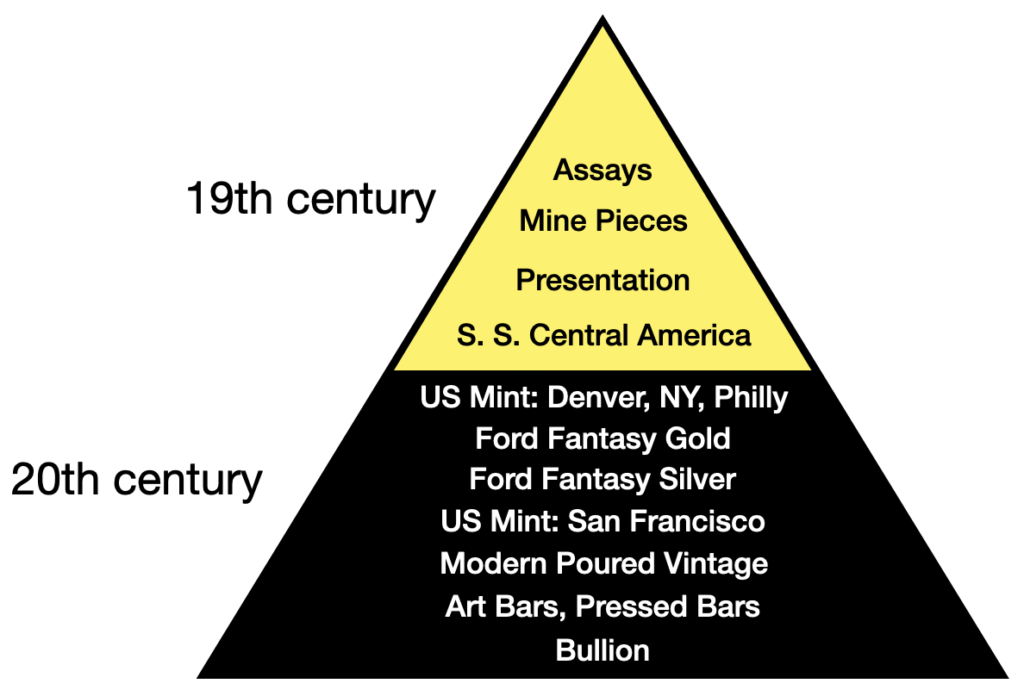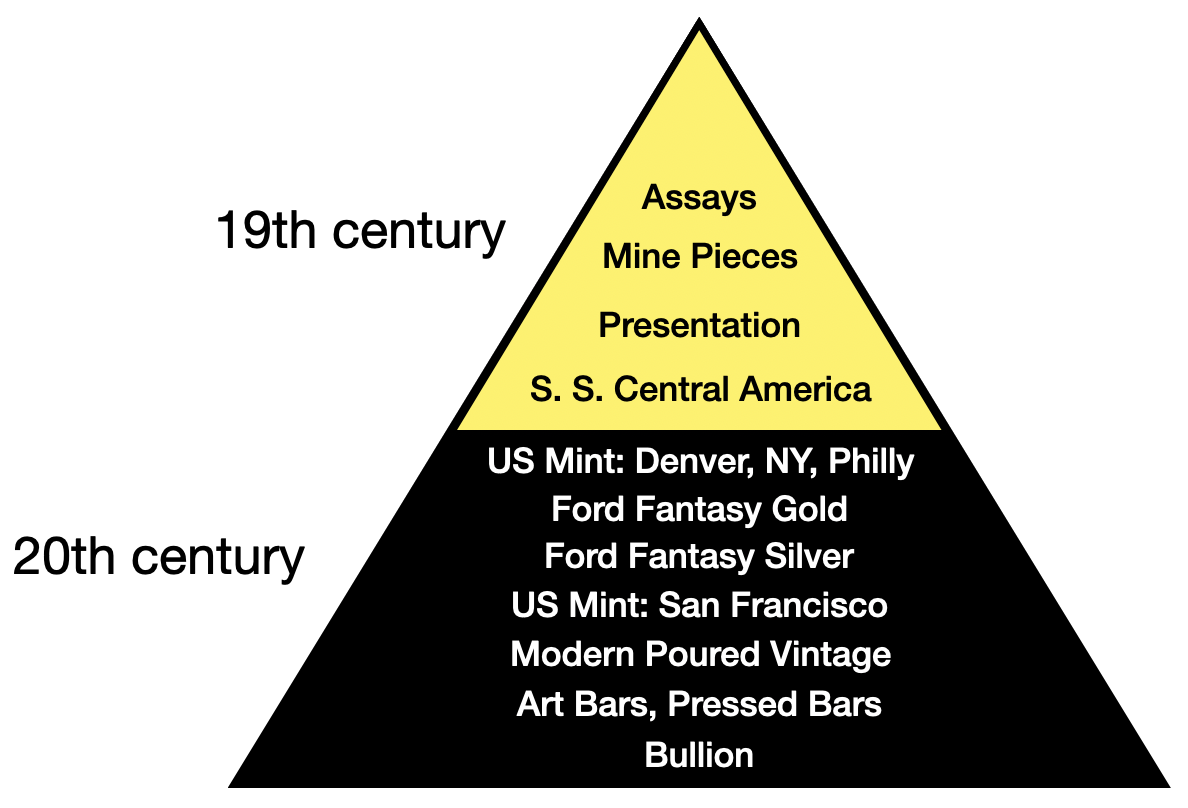When collectors are first starting out in their stacking or collecting journey, they often begin by stacking bullion. Over time they may become bored of the same things or start to look for something different to maintain interest in “the stack” and increase variety while also developing an increasing appreciation for rarity. As a result, this may often lead to going up the virtual ingot food chain and a discovery of new categories of bars one may not have been exposed to before.
A rough guide to what that hierarchy looks like can be seen below. While it’s not a hard and fast rule, and while there may be overlap in some areas this is just a general summation as it pertains to major categories and classes of bars.

- 19th Century Tiers: Mixed Metal Assays, Mine Pieces, Presentation, and S. S. Central America
- 20th Century Tiers: US Mint, Ford Gold, Ford Silver, US Mint San Fran, Vintage Poured, Modern Art Bars, and Modern Vintage
Bear in mind that this loosely generalizes and groups huge portions of the industry, and an argument could be made that one should look at it much more granularly within certain tiers. That said, the broader point being made is where many of the categories sit relative to one another and why we’ve opted to focus on the tip of the spear on this site.
At the top of the pyramid sits the most rare, the most elusive, and the oldest in the bunch. 19th century Assays edge out 19th century mine bars which beat out 19th century presentation pieces — some of which may each overlap with each other at times. A recap on what we mean by Assays and Presentation pieces can be found here.
At each level in the pyramid, the rarity goes up as well as the cost, although not in a straight line and not a hard and fast rule. Furthermore, Ford pieces tend to trade similarly in many respects to some older real pieces because of market demand/allure as well as relative perceived scarcity.

